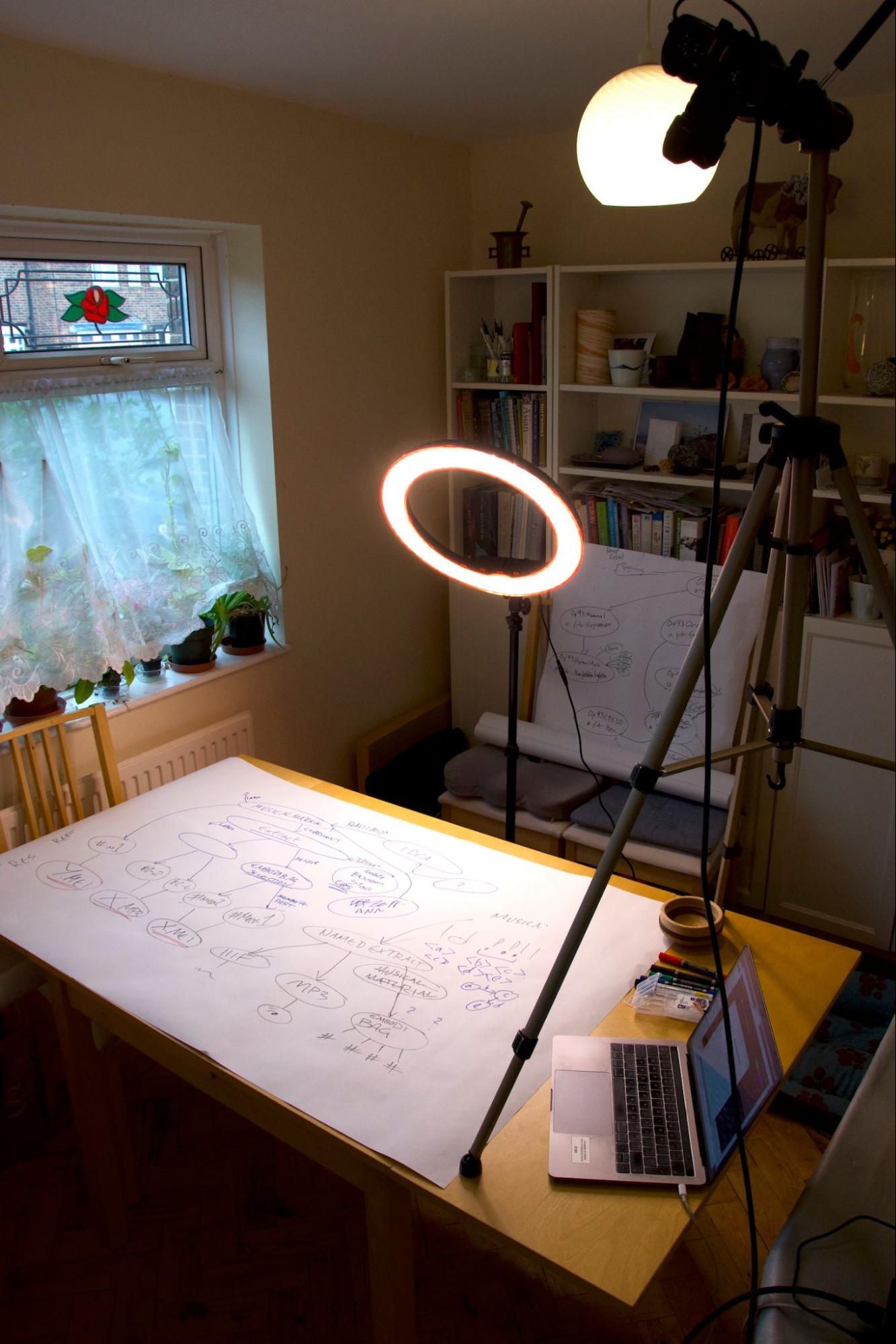| Digital Annotation Environment |
Modelling musical arrangements: Ontology design in lockdown
Before we can build tools to support scholarly research on arrangements and help capture and publish that research, we need to agree on how it, and the various musical arrangements that are used as evidence, should be represented digitally.
Musical scores themselves will be stored using the Music Encoding Initiative’s MEI format, which is a standard that is particularly good for scholarly editions.
Not all scores will be fully edited, though, and not all observations will point to scores, and our tools – and therefore our representation of the data – must support other types of evidence, particularly images, along with audio and video recordings. Our observations will have to be stored digitally, credited to us, and will point to parts of scores or media resources.
The process of devising an agreed, shareable, documented set of rules for how information should be represented is called modelling, and this is something that usually requires a lot of time and a lot of interaction between the people involved. Common approaches usually use a lot of very large whiteboards and sheets of paper for sketching things collaboratively and trying things out.
Since this project is international and, particularly, since our preliminary modelling activity is happening during a pandemic which precludes travel, we have had to find an alternative approach.

Over a period of about 3 weeks, David’s dining room was transformed by some lighting, a camera and 30 metres of 1m-wide rolled up blank paper. Through multiple video calls, David acted as scribe, which meant taking dictation or copying things others had drawn and shown over the video stream. Although the model sketches on paper couldn’t be erased, they could be amended, and more paper was always available.
Since each modelling diagram could be torn off and returned to later, this proved a reasonable compromise and, at the end of each day, models could be drawn more tidily using software, and distributed to the team.
We had already identified before we started that many parts of what we needed were already provided elsewhere, and could concentrate our attention on the gaps – particularly on how to talk about different versions of the same piece to make an observation or comparison. Despite this reduced scope, this has been a very compressed and intense process, and we will need time to try our ideas out, and to digest and document the model before we’re all confident it’ll work.
[Also, for those thinking of trying this at home, do use a plastic tablecloth – Sharpies can stain your table through the paper…]